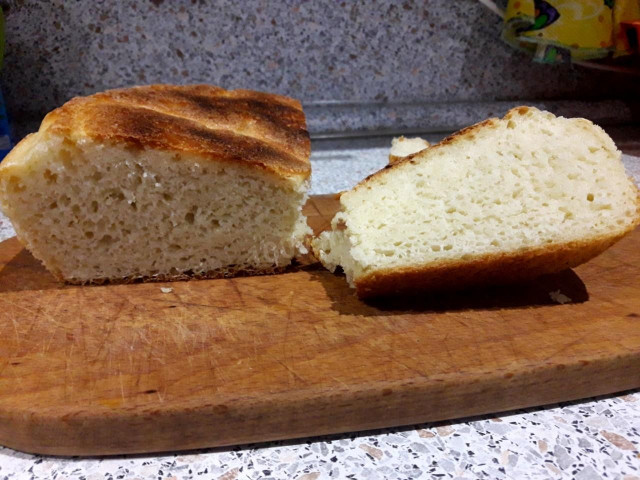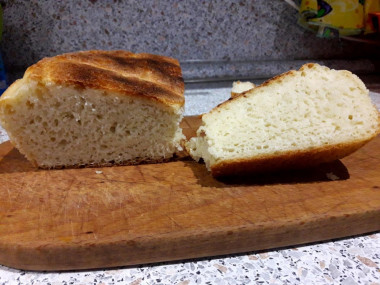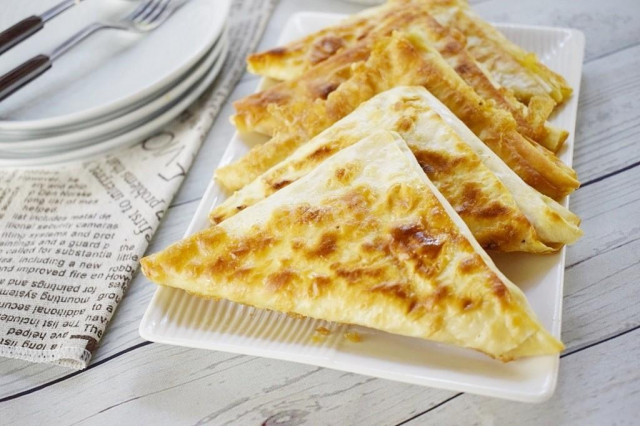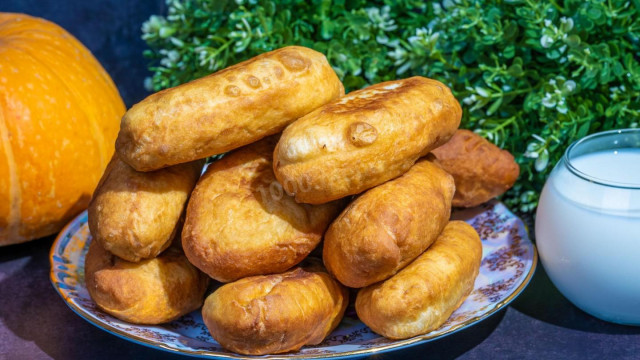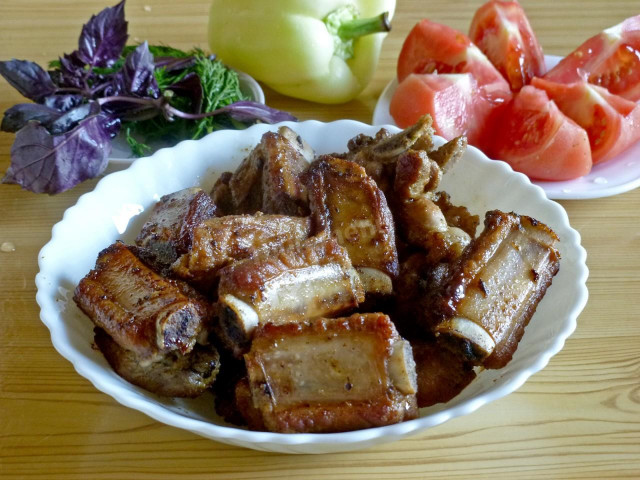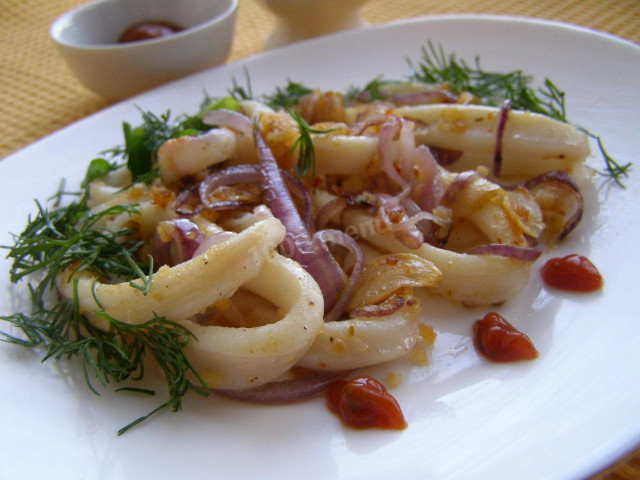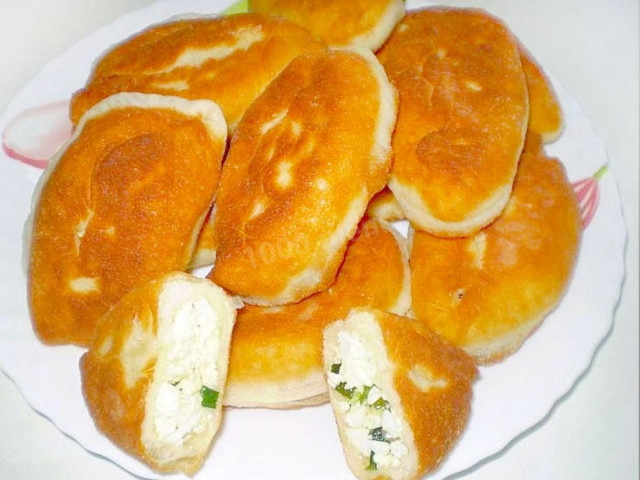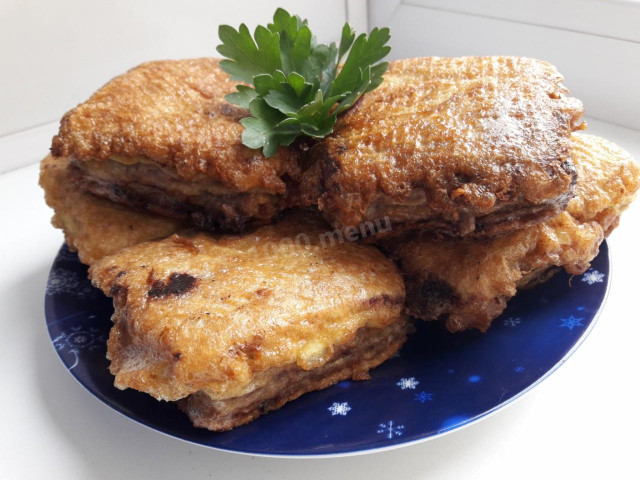Composition / ingredients
Step-by-step cooking
Step 1:
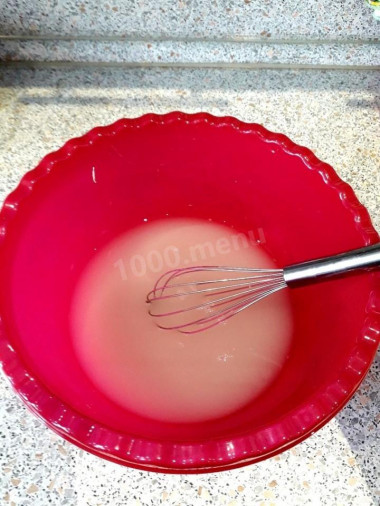
How to make bread in a frying pan? Prepare the products according to the list. Prepare the dough. To do this, pour the water into a suitable sized bowl. Add yeast, sugar and salt to warm water. Stir them with a whisk.
Step 2:
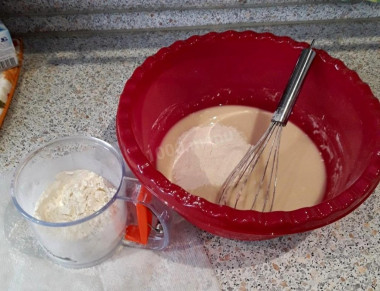
Sift wheat flour through a fine sieve to saturate it with oxygen. Pour the sifted flour into the water with yeast parts, gently stirring it with a whisk until smooth. Focus not on the volume of flour, but on the consistency of the dough.
Step 3:
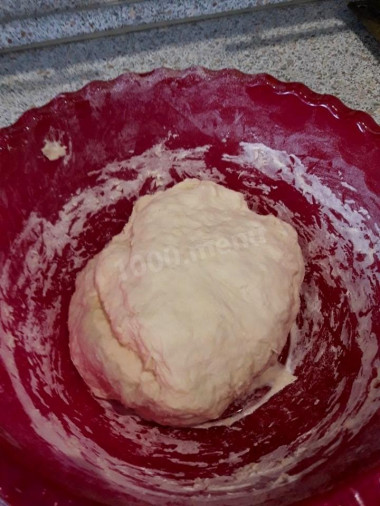
The dough should be soft and elastic, not stick to the hands. As soon as you get this, roll it into a ball, leave it in a bowl. Cover with a towel and put away in a warm place until the dough increases in size. It takes about 1 hour, maybe more. If your dough does not want to rise in any way, replace the yeast. When the dough rises, knead it.
Step 4:
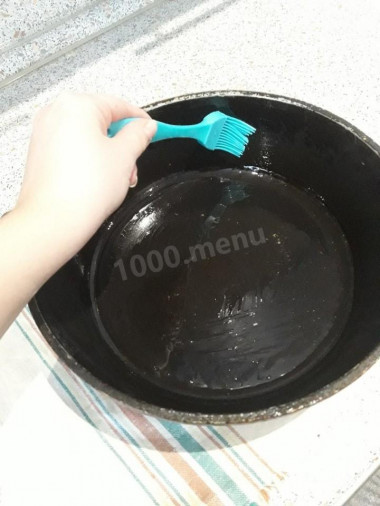
For baking bread, it is advisable to use a good, high-quality heavy frying pan with high sides and thick walls. Thin for bread is not suitable, keep this in mind. Grease the frying pan with vegetable oil.
Step 5:
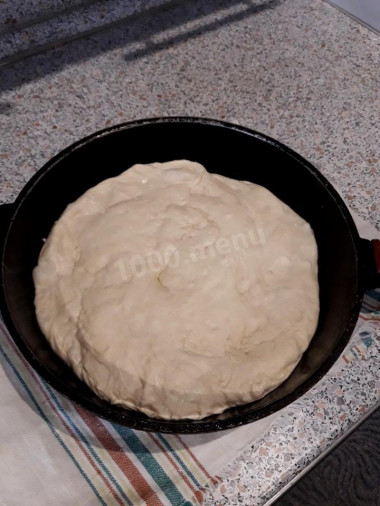
Transfer the dough that has come up to the pan and mash it along the bottom of the pan. Cover the pan with a lid and leave until the dough rises again. Do not turn on the stove.
Step 6:
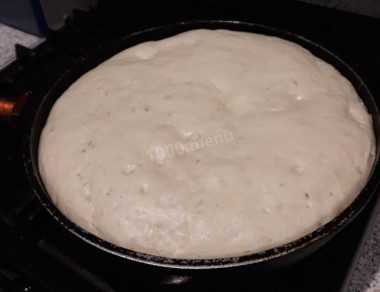
As soon as the dough rises, turn the stove on the smallest! fire. Cover the pan with a lid and fry for about 30 minutes. Attention! The time depends on the type of your stove, the pan and the thickness of the dough. Therefore, check the contents of the pan when cooking for the first time! It is better if you have a transparent lid so that you don't lift it once again, but you can see everything through it.
Step 7:
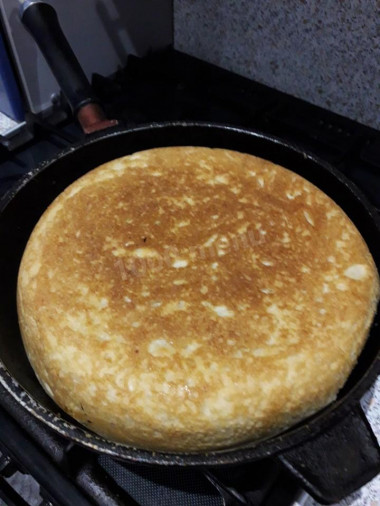
I took off the lid after half an hour and turned the bread to the other side. The second side should be fried as much, on a minimum heat and without a lid. It took me 30 minutes. As you can see, my bread has risen well, it has not burned.
Step 8:
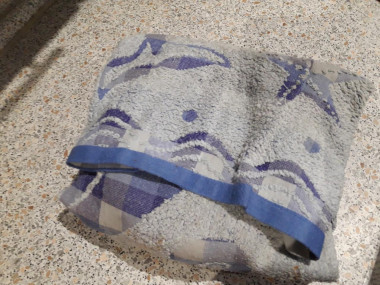
Remove the pan from the stove, remove the bread from it. Wrap the bread in a towel for 1 hour.
Step 9:
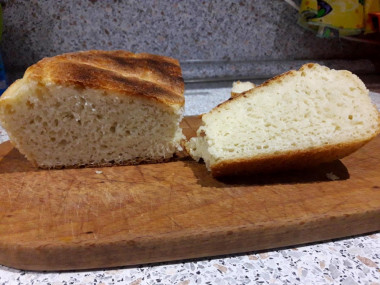
Homemade bread is ready! This is how it looks inside. It tastes like good bread. You can slice it and serve it to the table. Enjoy your meal!
Be prepared for the fact that flour may need more or less than indicated in the recipe. Focus not on the amount of flour, but on the desired consistency of the dough. To avoid mistakes, read about flour and its properties!
Important! Using dry yeast, it should be borne in mind that they occur in two forms: active and instant (read the instructions carefully before use!).
Active dry yeast looks like beads or small balls. Before applying them, they must be brought out of the "sleep mode". To do this, the active yeast is diluted in warm sweet water, milk or whey. The formed bubbles, foam or "cap" indicate that the yeast is ready for further use. Active dry yeast must be brought to complete dissolution in the liquid, otherwise, due to the remaining grains, the dough may not rise and the baking will be spoiled (yeast grains that have not dissolved in the liquid and got into the dough will no longer disperse on their own, which means they will not work).
Instant dry yeast is easier to use. They do not need to be activated before use. Such yeast, along with other ingredients, is simply added to the dough. As a result, the baking time is reduced.
It should also be remembered that both types of dry yeast may differ in their activity from different manufacturers.
Caloric content of the products possible in the composition of the dish
- Whole durum wheat flour fortified - 333 kcal/100g
- Whole durum wheat flour universal - 364 kcal/100g
- Flour krupchatka - 348 kcal/100g
- Flour - 325 kcal/100g
- Granulated sugar - 398 kcal/100g
- Sugar - 398 kcal/100g
- Vegetable oil - 873 kcal/100g
- Salt - 0 kcal/100g
- Water - 0 kcal/100g
- Dry yeast - 410 kcal/100g

